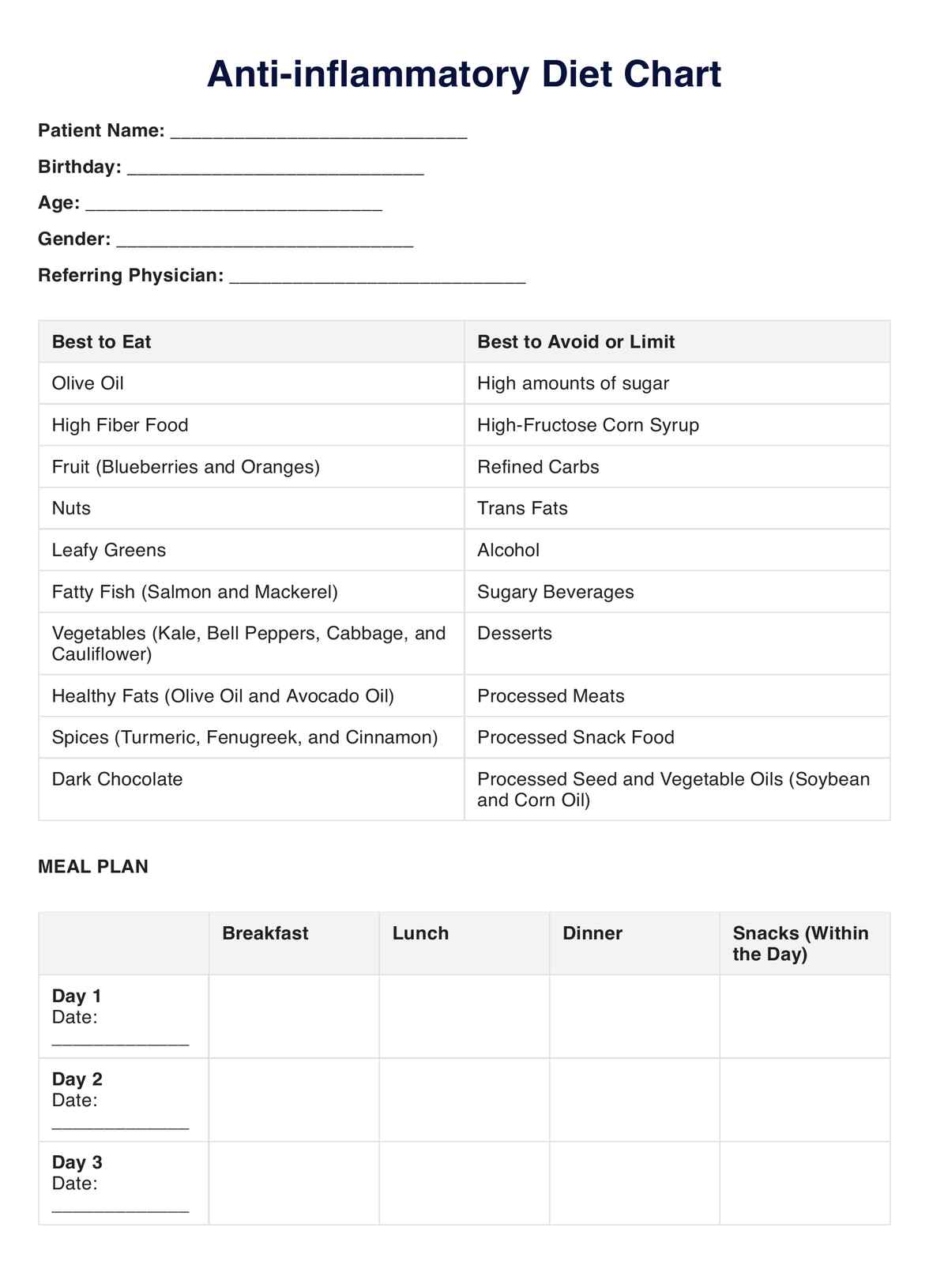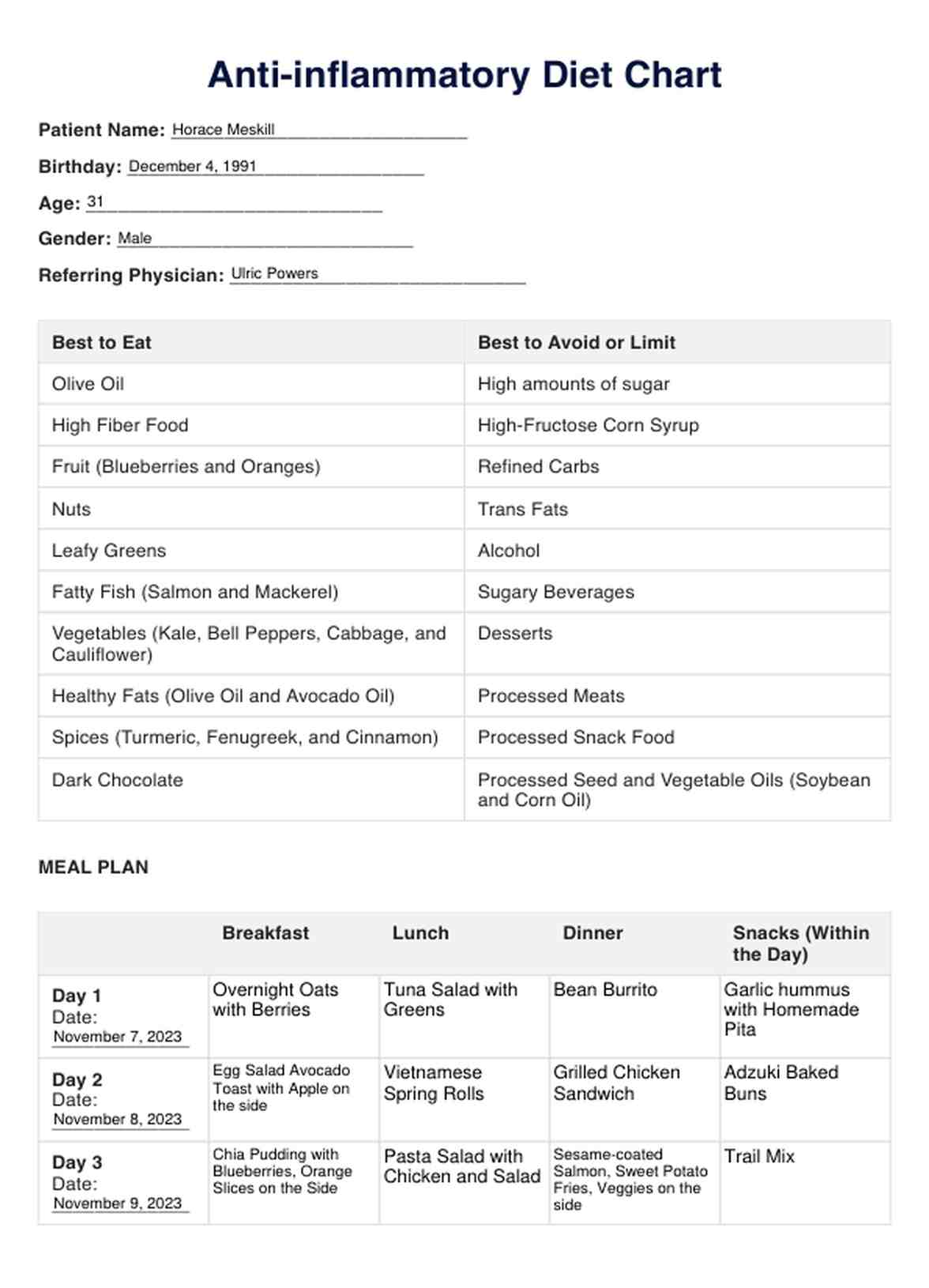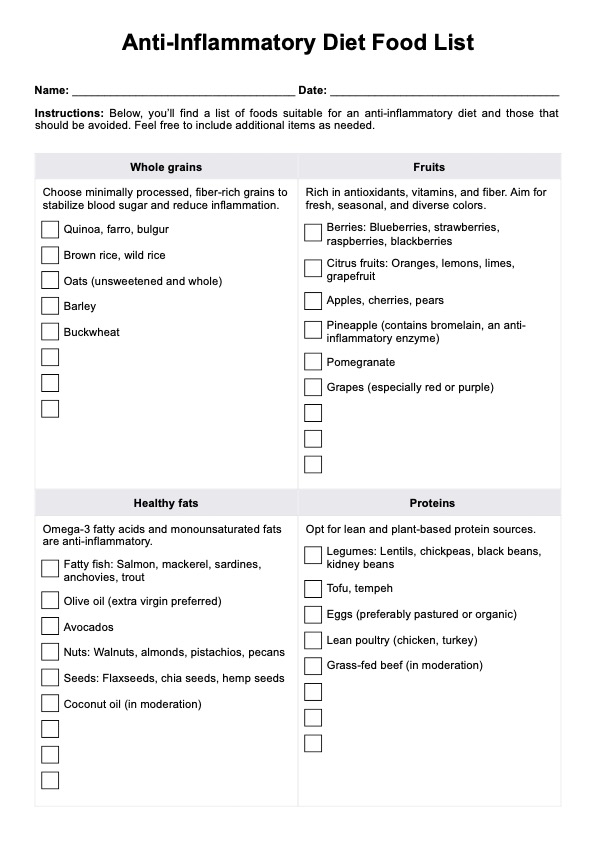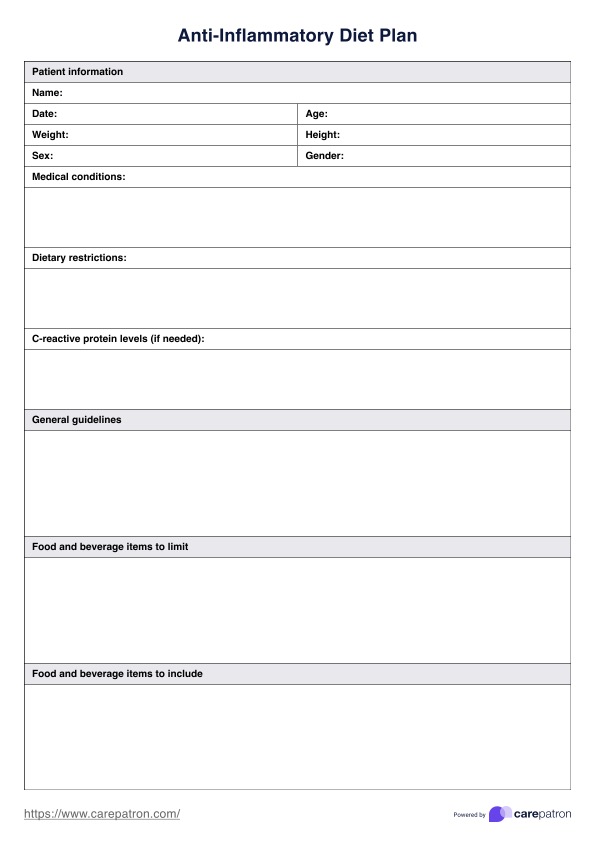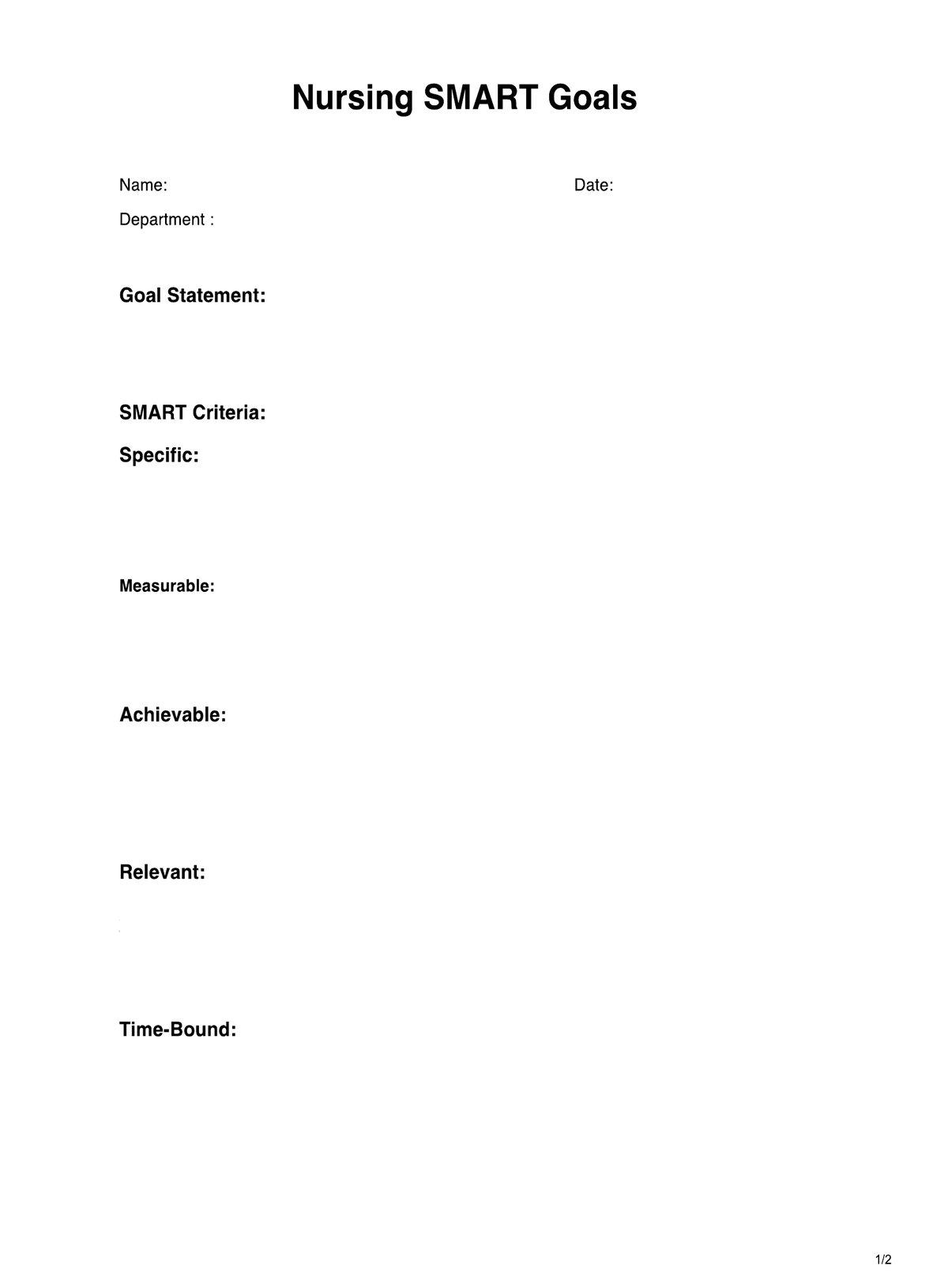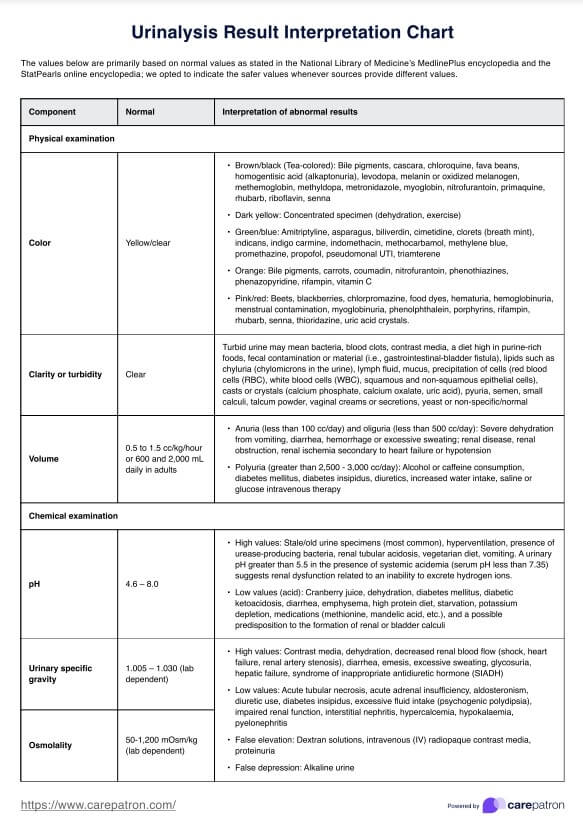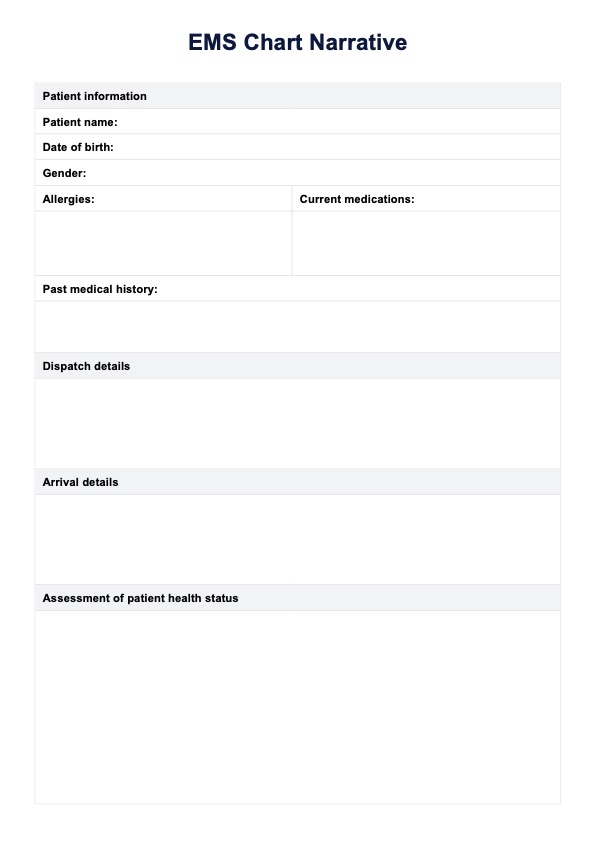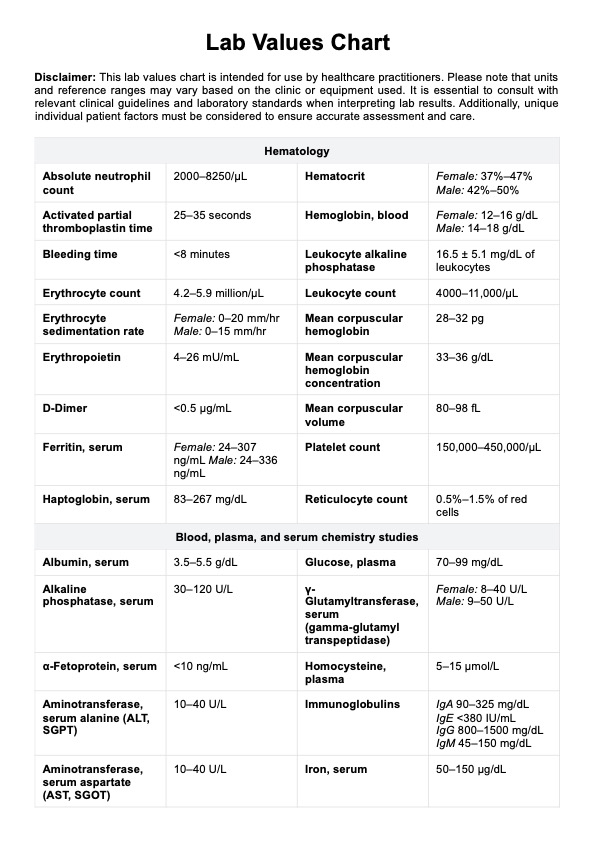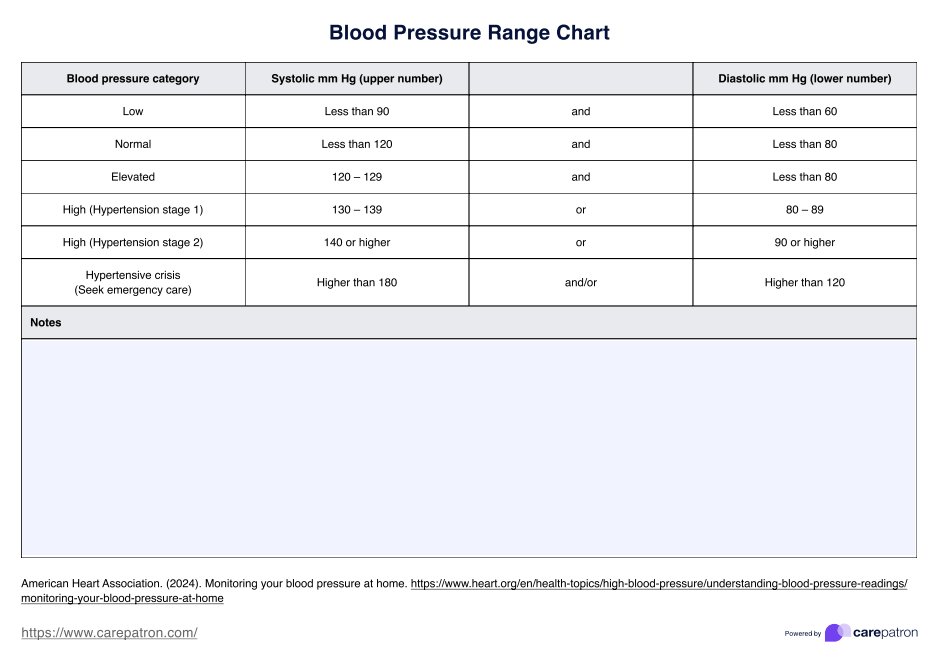Anti-Inflammatory Diet Chart
Help your patient manage their chronic inflammation with the help of an anti-inflammatory diet chart. Click here for a guide and free template.


What Is an Anti-Inflammatory Diet Chart?
An anti-inflammatory diet chart is a structured dietary plan designed to mitigate chronic inflammation within the body brought about by the development and exacerbation of health conditions, including heart disease, arthritis, diabetes, and cancer. The core principle of an anti-inflammatory diet is to prioritize consuming foods with recognized anti-inflammatory properties while avoiding those that can exacerbate inflammation.
The benefits of adhering to an anti-inflammatory diet are substantial. This dietary approach has reduced the risk of inflammatory conditions such as heart disease, diabetes, obesity, irritable bowel syndrome, rheumatoid arthritis, and psoriasis. Furthermore, an anti-inflammatory diet can improve blood pressure, cholesterol levels, blood sugar regulation, and immune function. It may also contribute to weight management, enhanced mood, and better cognitive function.
Anti-inflammatory foods form the cornerstone of this diet. Some notable examples you will find on the chart include:
- Fruits like blueberries and oranges
- Vegetables like kale, bell peppers, cabbage, broccoli, and cauliflower
- Olive oil, nuts, and leafy greens
- Healthy fats like olive oil and avocado oil
- Spices like turmeric, fenugreek, and cinnamon
- Dark chocolate
Conversely, an anti-inflammatory diet chart also identifies foods that promote inflammation, which should be minimized or avoided like the following:
- High amounts of sugar, sugary beverages, and high-fructose corn syrup
- Refined carbs and trans fats
- Alcohol
- Desserts
- Processed meats, snacks, and seed and vegetable oils
Anti-Inflammatory Diet Chart Template
Anti-Inflammatory Diet Chart Example
How Does It Work?
Step 1. Acquiring a Template
Secure a copy of a digital and printable anti-inflammatory diet chart template by following one of the two steps below:
- Select either the "Download Template" or "Use Template" button.
- Navigate to Carepatron's template library on their website or app and search for the "Anti-Inflammatory Diet Chart."
Step 2. Content Review
This chart serves as a valuable resource for comprehending the ideal food choices and foods to limit in order to maintain a well-balanced and nutritious diet that reduces chronic inflammation.
Step 3. Completing the Meal Plan
For patients dealing with chronic diseases that are made worse by inflammation or needing personalized meal planning based on their health condition, utilize the designated section to create a daily meal plan. This section allows you and your patient to brainstorm and document meals that align with the patient's specific dietary requirements.
Step 4. Ensuring Template Security
Securing the template and limiting access to authorized individuals is imperative following your consultation. We strongly recommend employing Carepatron, a HIPAA-compliant software that offers secure and convenient electronic patient record storage solutions.
When Would You Use This Chart?
Utilizing an anti-inflammatory diet plan is advantageous for a wide range of individuals, but it can be particularly valuable in specific situations, offering substantial benefits. Here are instances when adopting an anti-inflammatory diet and using the chart template can be especially advantageous:
Chronic Illness
If the patient is living with a chronic health condition, likely, they are also contending with chronic inflammation. Several health conditions are closely associated with inflammation, including Crohn's disease, heart disease, high blood pressure, irritable bowel syndrome, multiple sclerosis, obesity, psoriasis, rheumatoid arthritis, type 1 diabetes, and ulcerative colitis. Incorporating an anti-inflammatory diet and using the chart when meal planning for individuals facing these conditions can help manage inflammation and alleviate symptoms.
Food Sensitivities
Even if the patient doesn't have a diagnosed chronic condition, they may experience inflammation when consuming foods to which they are sensitive. Food sensitivities can trigger an immune response, increasing antibody levels and subsequent inflammation. In such cases, adopting an anti-inflammatory diet can alleviate discomfort and promote overall well-being.
Aside from those, it’s best to utilize the anti-inflammatory diet chart to help monitor and gauge the effectiveness of the diet. Positive changes in one’s symptoms are reduced pain, improved digestion, enhanced energy levels, and a general sense of well-being, which are indicators that the diet is working effectively.
Research & Evidence
Research surrounding the anti-inflammatory diet and, by association, its chart has provided valuable insights into its potential benefits and effects on inflammation and related health conditions. Several noteworthy studies and articles have contributed to our understanding of this dietary approach.
According to a comprehensive review posted on the Harvard T.H. Chan School of Public Health website, the anti-inflammatory diet can combat inflammation in the body. More specifically, it highlighted that adherence to a vegetarian diet “for at least two years was associated with lower C-reactive protein levels, a pro-inflammatory marker” (Diet Review: Anti-Inflammatory Diet, 2023). This finding underscores the potential of an anti-inflammatory diet to modulate inflammation in one’s body.
In connection with the findings above, an article published in Harvard Health Publishing that there’s a substantial influence of dietary choices on inflammation and that an anti-inflammatory diet has the potential to manage inflammation.
Finally, a systematic review and meta-analysis published in Oxford Academic delved into the impact of various diets on inflammation markers and explored the effects of diets categorized as “anti-inflammatory” on a range of inflammation markers within broader adult populations. Their conclusion states that “there may be a link between diet, inflammation markers, and disease outcomes in various adult populations” (Mukherjee et al., 2022), further supporting the anti-inflammatory’s potential.
To conclude, These studies collectively indicate that adopting an anti-inflammatory diet holds promise in reducing inflammation and managing health conditions associated with chronic inflammation.
However, like any diet, it’s essential to exercise caution and have the patient seek guidance from a healthcare practitioner before following a diet or personalizing it.
References
Diet Review: Anti-Inflammatory diet. (2023, February 2). The Nutrition Source. https://www.hsph.harvard.edu/nutritionsource/healthy-weight/diet-reviews/anti-inflammatory-diet/
Harvard Health. (2023, April 15). Quick-start guide to an anti‑inflammation diet. https://www.health.harvard.edu/staying-healthy/quick-start-guide-to-an-antiinflammation-diet
Mukherjee, M. S., Han, C. Y., Sukumaran, S., Delaney, C., & Miller, M. (2022). Effect of anti-inflammatory diets on inflammation markers in adult human populations: a systematic review of randomized controlled trials. Nutrition Reviews, 81(1), 55–74. https://doi.org/10.1093/nutrit/nuac045
Commonly asked questions
Primary care physicians, infectious disease specialists, rheumatologists, and emergency medicine specialists are the ones who typically use an anti-inflammatory diet chart.
Anti-inflammatory diet charts are used to assist in managing illnesses brought about by chronic illnesses and food sensitivities.
Ultimately, how an anti-inflammatory diet chart is used heavily depends on the healthcare practitioner and their patient. However, the template can be used in multiple ways, such as an educational resource, reference, and document for a meal plan.


